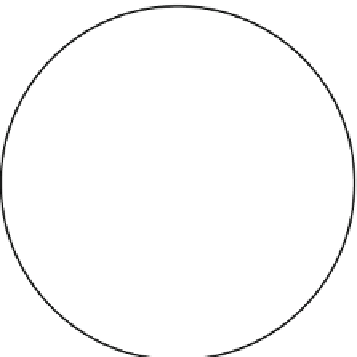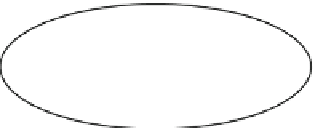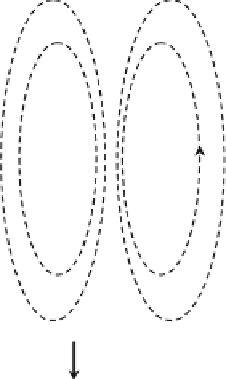Geoscience Reference
In-Depth Information
7.3
ULF Electromagnetic Noise Due to Crack Formation
in a Conductor
7.3.1
GMPs Due to Expansion of Tension Cracks
This section deals with GMPs caused by rock cracking and fracture. Acoustic waves
emitted by cracks are accompanied by generation of electric currents in conductive
layers of the ground. These currents develop because the conductive medium moves
in the geomagnetic field. Since a tectonic activity triggers the crack formation in
the rock, it produces the GMPs, which can contribute to the electromagnetic noise
occasionally observed prior to the occurrence of strong EQs (e.g., see Surkov et al.
2003
). The detailed review of these phenomena is found in Chap.
10
.
It is usually the case that magnetometers are situated far away from the source
electromagnetic noise. So, we shall consider the diffusion zone r<r
and the
intermediate range of distances, that is, C
l
t
r
r
d
. As we have shown above,
in such a case the system of extrinsic/induction can be replaced by an effective
magnetic dipole.
At first we examine the electromagnetic effect caused by individual tension
cracks. The flat crack is located in the plane x
0
;y
0
as shown in Fig.
7.9
. The vec-
tor
B
0
of the Earth's magnetic field makes an angle
0
with axis
z
0
which is
perpendicular to the crack plane. Let Œ
u
z
.t/
D
u
z
.t;
z
0
D
0
C
/
u
z
.t;
z
0
D
0
/
be a given function, which defines the displacement discontinuity/jump, and which
is normal to the crack surface and parallel to the
z
0
-axis. Far away from the crack,
the displacement field due to the crack expansion can be expressed through the
z
B
0
z
′
Fig. 7.9
A system of electric
currents and GMPs generated
by tension cracks.
1
—longitudinal acoustic
wave radiated by crack 2 with
radius R;
3
—field lines of
geomagnetic field
perturbations ı
B
;
4
—field
lines of extrinsic/induction
current j
'
;
0
is the angle
between the vector
B
0
of the
Earth's magnetic field and
axis
z
0
which is perpendicular
to the crack plane x
0
;y
0
.The
effective magnetic moment
M
of extrinsic currents is
antiparallel to the vector
B
0
C
l
y
,
y
′
d
B
j
˕
3
ʸ
0
x
R
C
l
ʸ
0
2
4
1
x
′
C
l
M
C
l





























































































Search WWH ::

Custom Search